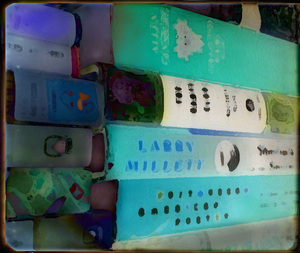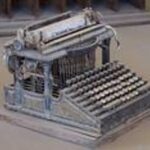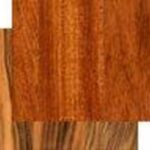Although the topic of making the most of your bookshelf space may seem silly, believe me when I say that most people do not use their bookcases and shelves nearly as effectively as they could. So many people have boxes of books stored in their attics, or worse-piled messily on floor, on top of tables. I have a lot of books-and I mean, a lot. Not only do I have a gigantic personal library, but I sell used books online.
So, I have thousands of books, and they’re all nice, neat, and organized-none are in boxes. I don’t have a zillion bookcases and shelves, either. Quite simply, I have learned ways to maximize the shelf space, allowing the maximum number of books on the shelves, while keeping the books ordered and organized.
Recently, I helped some family friends tidy up their new living room after moving across the country. Nicely, they have two walls of built in bookshelves-a dream! While there were books filling every shelf, there were still about 6 boxes of books left out, waiting.
I asked my friend if he minded if I arranged things quite differently, to get all the books on the shelves, rather than taking them up to the attic. He said of course, but the expression on his face said, “Suuuuure. You just go ahead and get those six huge boxes of books on the shelves, mmm- hmm!”
So, by simply arranging the books strategically, I was able to get all those books on the shelf, even with room left over for some of their boxed up board games. How did I do it? Read the three simple rules and method of book shelving below, to find out.
Rules
Rule 1–Bookcases are for books only
Although you may have some nice space left over after shelving all your books to make room for other stackable and shelved items such as board games, folders, papers, DVDs, CDs, or photo albums; initially, don’t even consider shelving these kind of items along with your regular books.
Likewise, bookshelves are not a place for trinkets, collectibles, framed photos, clocks, or anything of the sort. They look great in the pages of magazines and home décor books, but it is a very impractical use of bookshelf space, and usually looks junky. It also restricts access to the books.
Rule 2–Shelve books by size
Although it’s noble and quite arguably appealing to be so organized that you spend the time to keep your library organized by genre, topic, author,color, or title, it is one of the unproductive methods you can employ in an effort to get the most out of the shelf space. Organizing by size allows you to stack books horizontally, and even double shelve-which we’ll get to soon.
If you’re very attached to an organizational methodology, you might need to simply find more bookshelves to contain all your books, rather than trying to maximize the space you already have. This method relies on grouping by size.
Rule 3-Forget everything you know about shelving books
Shelving books is straightforward, and doesn’t take a lot of thought. We see them everywhere-bookstores, libraries. They are shelved standing vertically, in a long horizontal row-it’s easy and great. But-is it the best way to make the most of the available space? Far from it! Take a look at all the wasted space.
Between the wasted, empty space above the books, and the shelf space when they are all flush against the back of the shelf, there is probably as much empty space as there is space taken up by the books. This is especially true with bookcases in the home that are often quite deep. Half the space is being wasted.
Again, if you are attached to having a traditional, single row of vertical-standing books on each shelf, this method may not be your answer, and you might have to find additional shelf space.
Instructions
Step 1–Remove all items from the bookshelves or bookcase(s) you wish to organize. Clean the shelves off-they can get crazy dusty. As you’re removing the books, place them on the floor or a table in stacks according to size. For example, all mass market (pocket size) books go together, as do trade paperbacks, standard hardcovers, larger format paper covers, oversized, or coffee table sized books-you get the idea.
The only exception to the general size-grouping rule applies to extremely thin, pamphlet style books, rare, or fragile books. Set aside any books that are, or could become compromised, in their own separate pile.
Step 2-Plan how your books will best fit on your particular shelves. First, take note of how many books you have in each size category. Also note the size (depth, height) of each shelf. If you have a ton of small mass markets, you can use a shorter shelves. The larger, coffee table size books would logically go on deeper, and taller shelves.
Step 3-Begin replacing your books on the shelves by picking and choosing, mixing and matching from the following two methods-whatever is going to work best in your given spaces.
Place the books horizontally on the shelves. Simply lay them down flat and stack them up all the way to the top of the shelf. Obviously, they are already organized by size, but when employing this method, stack the sturdiest, heaviest books on the bottom. Don’t worry about the books-I have been shelving like this for a decade, and I have never had any books damaged from this method.
Double shelve your books. Whether you are stacking them horizontally or vertically, push the books all the way to the back, opening up a space in front for yet another set of books. If you don’t like the look of horizontally stacked books, you could stack the back row up horizontally all the way to the top, and then place a traditional vertical row of books in the front.
The different rows don’t have to be the same size-for example, the back row could be small mass markets, and the front row could be regular sized hardcovers. But wait–am I crazy? How are you going to see the books in the back row? Well, you’re not going to. It’s a small sacrifice. Besides, all the cool kids are doing it.
Remember that since there aren’t going to be any extraneous items on the shelves, and the books are all stacked and shelved in neat stacks and rows, it is quite easy to simply pull out a stack or two if you’re looking for a particular book. Remember too, that books in boxes, in the attic, or stacked haphazardly and messily on inappropriate furniture are a lot harder to see.
Continue shelving books using these methods until all your books are shelved, and/or all your space is used. Place any of the older, thin, or compromised books you earlier set aside, in a safe space on top of a stack.
By now you probably realize the whole point of grouping by size is so that stacked books become like units and are are orderly, stable, easily navigable, and easily moved about-and the best part is, you’ve used all the available space, don’t have to build or buy more shelves, and you might even end up with more storage space on the shelves for superfluous games or DVDs!





